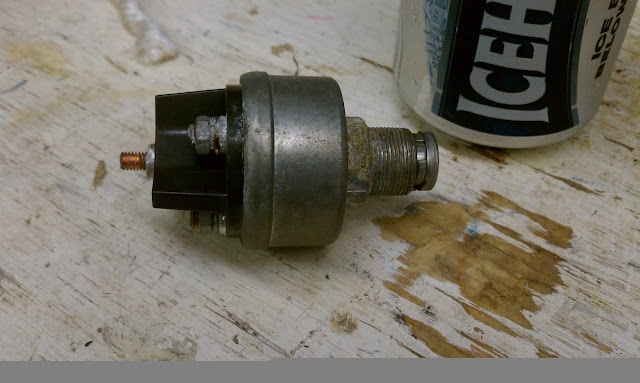mcw
Contributing Member
V/P 430b 4.3gl v6 carb
Ok boat running ok, no issue at all, but my reason for this thread is this.
Turning ignition to position 2 my dash volt dial shows 10v, but 12.7 v at battery terminal, and 12.7 volts at position 1 on ign switch, but as soon as the coil is energized the dial drops, if i remove the coil wires my battery volts dial shows 12.7v, i have fitted a pertronix spark module, the coil is a Mallory 9-29701 with built in resistor, both parts were imported to the uk via light house marine, and was advised the coil should be matched to the spark module. No ballast resistor is installed on engine loom, (removed by me upon install). I have also read that the spark module should not be connect to the + terminal on the coil, due to the voltage drop before cranking, the module requires 12, not the coil voltage at 10v.so a new 12 wire would have to be supplied direct to the module + terminal vi a supply from the ignition, but my ignition volts is reduced when the coil is connected?????
So is there a fault because i would like the Volt dial to show the correct voltage, when the engine is running the dials shows about 13.7 volts.
any ideas
I'm a bit stumped
mark
Ok boat running ok, no issue at all, but my reason for this thread is this.
Turning ignition to position 2 my dash volt dial shows 10v, but 12.7 v at battery terminal, and 12.7 volts at position 1 on ign switch, but as soon as the coil is energized the dial drops, if i remove the coil wires my battery volts dial shows 12.7v, i have fitted a pertronix spark module, the coil is a Mallory 9-29701 with built in resistor, both parts were imported to the uk via light house marine, and was advised the coil should be matched to the spark module. No ballast resistor is installed on engine loom, (removed by me upon install). I have also read that the spark module should not be connect to the + terminal on the coil, due to the voltage drop before cranking, the module requires 12, not the coil voltage at 10v.so a new 12 wire would have to be supplied direct to the module + terminal vi a supply from the ignition, but my ignition volts is reduced when the coil is connected?????
So is there a fault because i would like the Volt dial to show the correct voltage, when the engine is running the dials shows about 13.7 volts.
any ideas
I'm a bit stumped
mark





